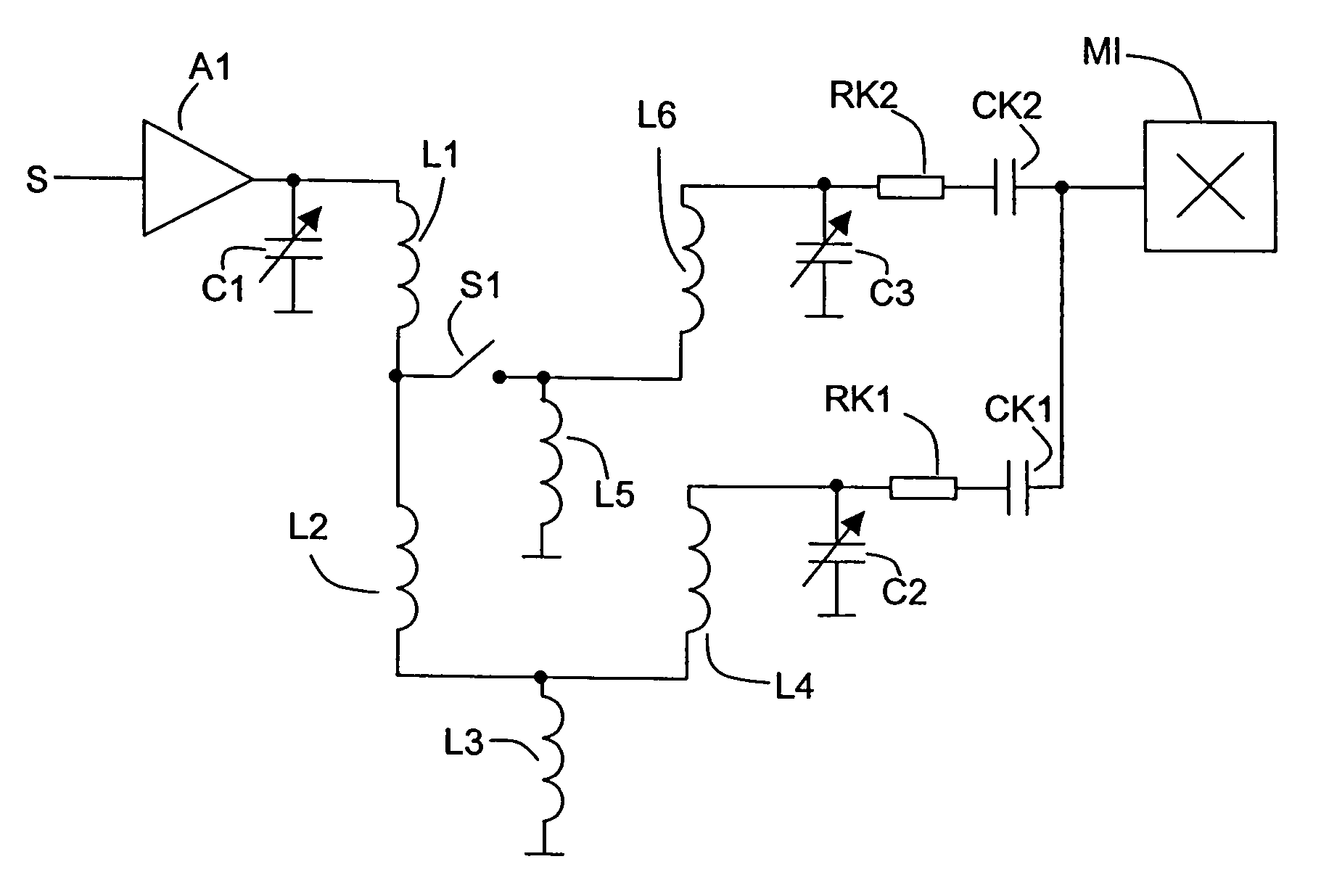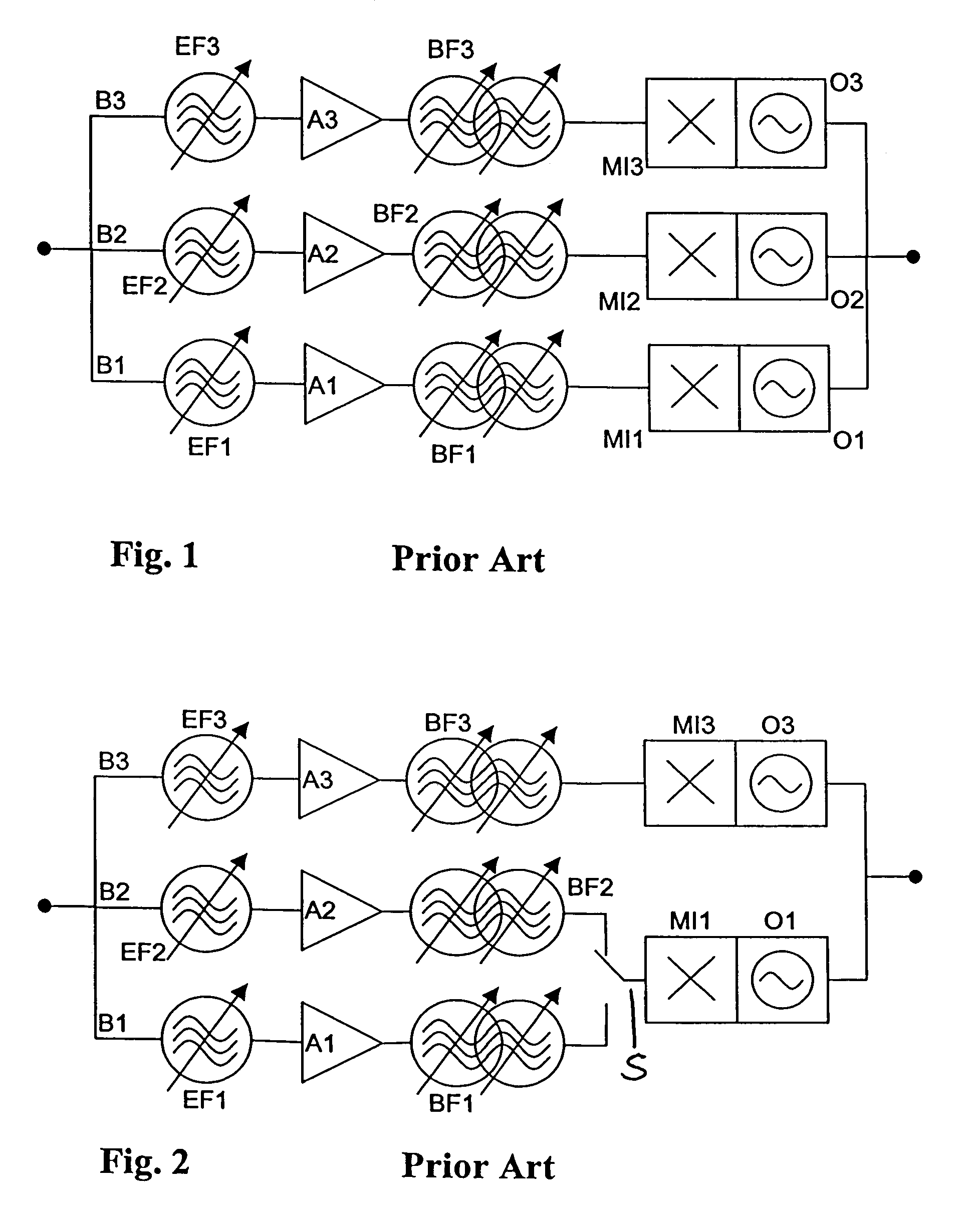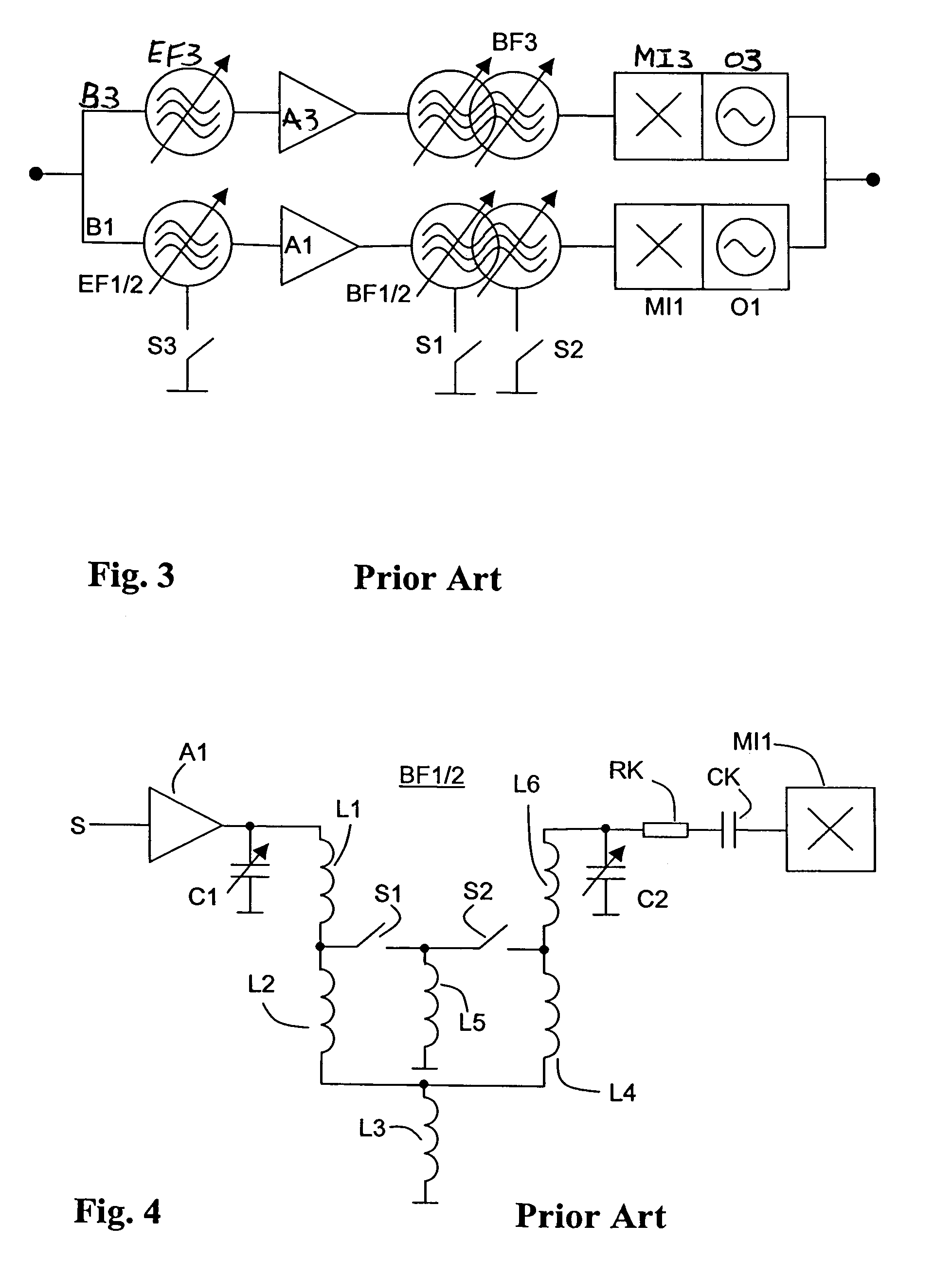Switchable tuneable bandpass filter with optimized frequency response
a bandpass filter and tuning technology, applied in continuous tuning, discontnuous tuning with seperate pretuned circuits, television systems, etc., can solve the problem of relatively large level differences over the two frequency ranges, the coupling elements ck and rk can be set optimally, and the tuning range can be restricted. achieve uniform gain response, without significantly increasing the overall outlay
- Summary
- Abstract
- Description
- Claims
- Application Information
AI Technical Summary
Benefits of technology
Problems solved by technology
Method used
Image
Examples
Embodiment Construction
[0026]FIG. 5 shows a diagrammatic illustration of a simplified practical embodiment of the switchable tuneable bandpass filter according to the invention. An input signal S passes from an antenna (not shown in the figure) via an input filter (likewise not illustrated in the figure) to an input amplifier A1. In a first switch position of a switch S1, the switch S1 is open. The signal passes from the output of the input amplifier A1 to a first primary resonant circuit. The first primary resonant circuit is formed from a variable capacitance C1, the series circuit formed by two inductances L1 and L2 and also an inductance L3. In this case, the inductance L3 is a common reference point inductance for the first primary resonant circuit and a first secondary resonant circuit. In this switched position of the switch S1, the first secondary resonant circuit is formed by the inductance L4 and the variable capacitance C2. In order to obtain the desired property of the bandpass filter, the ind...
PUM
 Login to View More
Login to View More Abstract
Description
Claims
Application Information
 Login to View More
Login to View More - R&D
- Intellectual Property
- Life Sciences
- Materials
- Tech Scout
- Unparalleled Data Quality
- Higher Quality Content
- 60% Fewer Hallucinations
Browse by: Latest US Patents, China's latest patents, Technical Efficacy Thesaurus, Application Domain, Technology Topic, Popular Technical Reports.
© 2025 PatSnap. All rights reserved.Legal|Privacy policy|Modern Slavery Act Transparency Statement|Sitemap|About US| Contact US: help@patsnap.com



